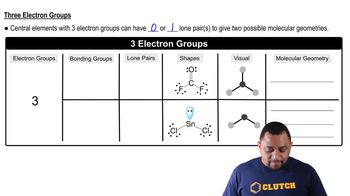Here are the essential concepts you must grasp in order to answer the question correctly.
Dipole-Dipole Interactions
Dipole-dipole interactions are attractive forces between the positive end of one polar molecule and the negative end of another. These forces arise due to the uneven distribution of electron density in polar molecules, leading to partial positive and negative charges. The strength of these interactions depends on the polarity of the molecules involved; more polar molecules exhibit stronger dipole-dipole forces.
Recommended video:
Polarity of Molecules
Polarity refers to the distribution of electrical charge over the atoms in a molecule. A molecule is polar if it has a significant difference in electronegativity between its atoms, resulting in a dipole moment. In the context of the question, understanding the polarity of Xe, CH3Cl, and HF is crucial, as it directly influences the strength of their dipole-dipole interactions.
Recommended video:
Molecular Structure and Geometry
The molecular structure and geometry of a compound determine its polarity and, consequently, its intermolecular forces. For example, the shape of a molecule can affect how charge is distributed across it. In this question, analyzing the molecular geometry of Xe, CH3Cl, and HF helps predict which substance will have the weakest dipole-dipole forces based on their respective polarities and molecular arrangements.
Recommended video:
Molecular Geometry with Three Electron Groups
 Verified step by step guidance
Verified step by step guidance


